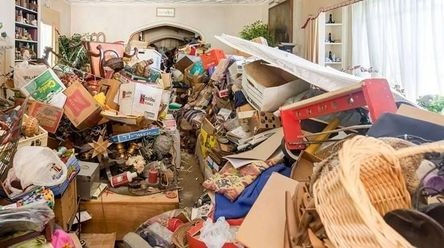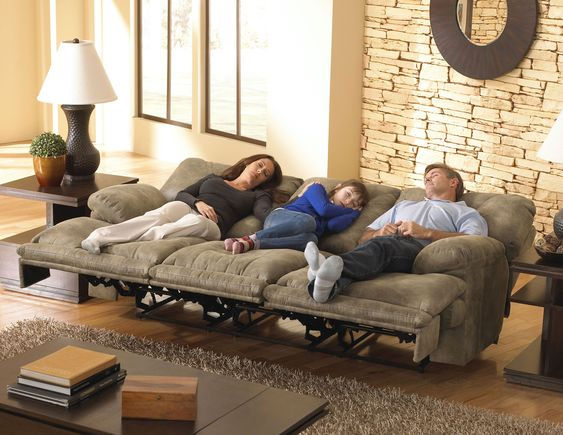How to: Organize ANY Space
- faithdeitrich
- Feb 10, 2023
- 5 min read

Sometimes you just don't know where to start. I mean, hey....sometimes you can just get some friends together and do a quick sorting out >> make a to-do list >> sell >> donate >> clean >> organize. But sometimes that room or that basement or that garage or that whole house is packed with stuff and you have no idea where to begin.
And sometimes you have a deadline. Maybe a complaint was made to the city or your family refuses to visit or let their children visit until you declutter and clean.
You can still organize that space, I promise.
A feeling of overwhelm can be natural, especially if you’re going through a space that is heavily packed in with items. In fact, you’ll likely feel overwhelmed at some point in the process no matter what level of decluttering and organizing you’re facing.
So take that big project and break it into small sections. Just like you'd cut a steak into bites to eat it...there's just things we can't swallow all at once, right? I often say, “Corner to Corner and From the Top Go Down” because this is the best basic strategy no matter how much stuff you need to go through.
Then find as many people to help you as you can and get them together to work through the space.
Once you've got everyone there (and you've fed them....and coffee is vital...and water...just sayin'), then the process will be a lot less stressful and more fun; and you’ll get much further than you can alone!
This is how your team will do it >>
When you enter a room, look at the corner closest to the door, then at the top of the pile in that corner. Start there. Work your way down through that pile.
Sort that pile into bins/bags labeled: "Trash" "Donate" "Sell" "Keep"; and when you reach the bottom, begin working your way towards the next corner of that wall, starting at the top of each pile, and working through it until you find that next corner. Small furniture items just get placed next to the labeled bags, not in the bags.
When you find that next corner >> Turn and work your way to the following corner in the same way, start at the top of each pile and work down to the floor. If you run into a large piece of furniture such as a sofa or a bed, consider that a corner; and work your way around it.
After the piles against the walls and on the floor are sorted, then begin clearing off the larger pieces of furniture using the same "Corner to Corner and Top - Down" method.
If the space is really packed in, and this "top - down" strategy above feels unsafe then look to see what IS a safe place to start. Look at the nearest, most easily accessible box or pile. What can you most readily reach to sort through? Start there.
And, if mentally all you can handle sorting through today is the pile or box right in front of you, that’s just fine. Marathon sessions are not necessary to see eventual results. Just keep going. Focus on the process. Do as much as you can as often as you can. You will get there.
If you need a more specific plan of attack to stay on track, then take a look at the example checklist below.
When you encounter anything that slows your process whether that’s your own discouragement, unexpected costs, or other things that stop the work, a checklist will keep you on track as you tackle the challenges that come with clearing out and reorganizing a space.
Next to the checklist, you could also put a photo or an item that represents your motivation for doing all the work to declutter and organize. This photo could be a picture of your dream room, a school photo of one of your grandchildren you’d like to have visit, or even a $100 bill to represent the money you’ll save or make. Your checklist can be as general or specific as you like; but make sure it will provide you with the next step to focus on when the unexpected happens to stall your progress.
Your checklist should be a plan of action that you can use to keep you on track.
EXAMPLE CHECKLIST
ð Today I’m going to look over the office and family room to get a general idea of the number of things stored inside: boxes, loose piles, furniture, décor, shelves, etc.
ð I’m going to write down which things I need or want to keep (e.g., sofa, table, bookshelves, desk, lamp, family photos, game consoles, etc.). The more specific I make this list, the easier it will be to clear the extra things from the rooms.
ð I’m going to write down which things can be quickly removed by selling, donating, or throwing away (e.g., pile of old newspapers or magazines, treadmill, pile of perpetually unused holiday décor, clothes that no longer fit). The more specific I make this list, the easier it will be to clear these things from the rooms.
ð I’m enlisting as much help as I can for the process before I actually start; and I’ll give everyone a copy of the lists I made, so they know what to keep, throw away, donate, or sell. I know my son can haul trash away and my husband could take donations to the local thrift store, and Christy is great at selling things so I’m going to ask her to help sell items.
ð I’ll explain that we’re going to be using the method “Corner to Corner and From the Top Go Down” to clear out the office; but since the living room is really piled up, we might need to be cautious in a few places to avoid breaking things.
Work Day One: Time to get into the piles in the family room. Clear everything from the first wall. Decide what is donations/trash and set them aside for the guys to haul away. (Note to self: Buy everyone breakfast/lunch since they’re doing so much heavy lifting…ask about Liz and Mike’s food allergies)
Work Day Two: Clear everything from the second wall and list the treadmill for sale once it’s been uncovered and cleaned. Decide what is donations/trash and set them aside for the guys to haul away.
Work Day Three: Clear everything from the bookshelves on the third wall and the wall with the entertainment center. Decide what is donations/trash and set them aside for the guys to haul away. Sort through the book piles once everyone is out of the room tonight. If I can’t fit the ones I want to keep on the shelves in the living room, I’ll box them up until I finish clearing out the office. I could fit them on those shelves since they’re mostly empty.
Work Day Four: clear off the sofa, chairs, desk, entertainment center, tv, and tables. Finalize everything to be donated or trashed and pack them up into bags and boxes.
Work Day Five: Clear out the bigger items that can be gotten rid of by selling, donating, or throwing away and put them into the donation pile in the garage.
Work Day Six: Drop off all the things to be donated. Bring all the trash to the dump. If the treadmill hasn’t sold, lower the price. If it doesn’t sell by next week, I’ll donate it.
Work Day Seven: Clean the room – vacuum, wash the tables, organize the things left in the room, decide what needs to be repaired.
I'm so proud of myself !!! Now that's done I'll...
ð Decide on a budget and the schedule for the repairs. Get written quotes and estimates from local professionals. Then compare the costs vs. services, and times when the companies can complete the work.
ð While the repairs are getting done in the family room I’m going to use this same checklist to make some progress on the office.
Or maybe I'll just take a break first...

HAPPY ORGANIZING MY FRIENDS!
Comments